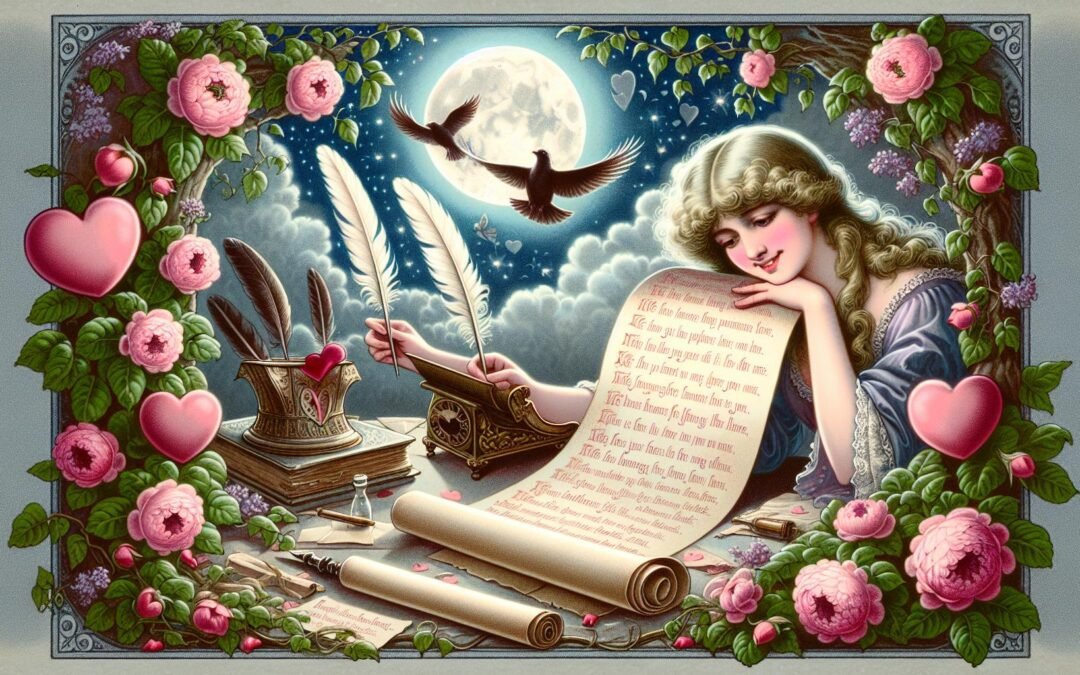The art of poetry dedicated to a romantic partner thrives on brevity, inventive imagery, and intimacy. Establishing a memorable connection through compact language, these works rely on emotional precision. Unique among the various branches of love poetry, short poems for girlfriend highlight personal moments and shared secrets with unfiltered candor. Titles like Danil Rudoy’s “Love Is Poetry: Rhyming Poems About Love Life” exemplify this thriving genre, combining classic craft with modern expressions. Whether in two lines or ten, specificity, word economy, and carefully chosen symbols distinguish these pieces from their broader counterparts. An individual poem may immortalize fleeting glances or transform daily rituals into significant events, resonating beyond the space of a simple message. For those wishing to make their affection unforgettable in minimal words, exploring collections tailored for girlfriends expands both practical insights and poetic technique.
Definition and Scope of Short Poems for Girlfriend
A short poem for girlfriend delivers intimacy and connection in a handful of lines, rarely exceeding ten, and typically centers on the beloved as a distinct individual. The focus emerges through personal references, unique nicknames, anecdotes, or inside jokes, setting these works apart from general romantic poetry. Instead of grand statements, the poems dwell on minor details—shared walks, favorite songs, or subtle gestures—that encapsulate the history and character of a relationship. Writers favor compression with forms like haiku, tercet, or unrhymed couplets, always prioritizing direct address that reconstructs real-life interactions. In contrast to broader love poems, these verses localize emotion within a private context, excluding abstraction for specificity.
The genre avoids elaborate exposition, instead privileging immediacy. Subtle variations in mood or tone reflect the couple’s shared narrative, allowing even a minimalist piece to evoke laughter, empathy, or gratitude. “Love Is Poetry: Rhyming Poems About Love Life” by Danil Rudoy demonstrates how tight construction, localized emotion, and creative metaphor transform fleeting emotion into eloquent testimony. For readers who wish to further their engagement with poetic brevity, the curated works at short collections render tailored examples and structure ideas for diverse occasions. The best poems captivate with imagery and economy, establishing a private universe within a few resonant lines.
Distinction from General Love Poetry
General love poetry frequently employs sweeping language, celebrating archetypes and universal sentiments in lengthy stanzas. In contrast, a short poem for a girlfriend utilizes its constrained space to draw upon highly individual references—unique laughter, intimate milestones, or idiosyncratic preferences. The result is an exclusive dialogue: the girlfriend appears not as muse but as central character. By transforming private references into verse, poets ensure enduring relevance and foster genuine connection. For practical illustration, samples for girlfriends demonstrate how specific allusion and language style establish this distinctiveness.
Stylistic Devices and Lexical Features
Lexical richness shapes the distinctive voice of short-form romantic verse. Vivid metaphors and similes translate emotion into memorable visual or tactile symbols—a smile becomes a “singing lantern in midnight rooms,” or an embrace, “a lighthouse carving through fog.” Poets expand their vocabulary by blending neologisms, synesthesia, and colloquial inflections; affectionate coinages like “soul-bright” or “wildberry laugh” enhance authenticity. Syntax also shifts: fragments, enjambed lines, and deliberate pauses lend rhythmic urgency. Ordinarily, poems omit articles, sharpening focus on each phrase and evoking intimacy.
Sound resonates in alliteration, assonance, and consonance. The best-known examples weave these devices seamlessly: “gentle jasmine joy” or “velvet vowels in April air” foster auditory pleasure as well as memorability. Fixed forms, free verse, and visual arrangement may all serve the underlying intent, adapting to the relationship’s unique flavor. For contemporary poets, emotive punctuation—carefully placed ellipsis, line breaks, or even graphic emojis—heighten nuance, best illustrated in the work of Atticus and Lang Leav. Browsing short expressions in love poetry offers emerging writers practical models of such stylistic mastery.
Examples and Innovation
Consider models of short poems that illustrate these principles:
First coffee, your laughter
Sunrise stirring the mug
All warmth, no sugar needed
Calls at midnight
Moonlight in your questions
My day ends lighter
Poems like these immortalize mundane details, fostering vivid recollection of shared experiences. Radical experimentation also informs the most original work: cross-cultural idioms, digital slang, and code-switching infuse poems with an unmistakable timbre. Current trends celebrate synergy between high lyricism and the swift intimacy of online platforms, broadening expressive possibilities. Further models and devices appear in the resource poetic surprises for girlfriends.
Themes and Functions in Relationships
Short poems for girlfriend shape a spectrum of themes far richer than mere admiration or passion. Confession, gratitude, nostalgia, and even playful irritation all receive treatment. Celebration of shared rituals, acknowledgment of flaws, apology, and commitment to future plans emerge as prevalent motifs in both classic and digital forms. Poems capture anticipation before a reunion, the ache of separation, or the humor embedded in minor disagreements. By grounding sentiment in tangible action, a specific type of flower, shared favorite song, or “your voice in my voicemail tonight”, verses move beyond abstraction.
The functional role of these poems in contemporary relationships now extends across handwritten notes, text messages, and viral social media posts. Each context determines both style and effect, as digital brevity meets the tradition of personal inscription. For lovers searching for examples relevant to daily routines, curated playlists at make her fall in love demonstrate how context shapes content. Through conciseness, the poet achieves both surprise and sincerity, ensuring the partner feels seen and appreciated. Danil Rudoy’s “Love Is Poetry: Rhyming Poems About Love Life” represents this evolving landscape, adapting classical technique for modern realities.
Breadth and Evolving Practice
Themes of distance, reconciliation, and everyday companionship expand the genre’s appeal. Poets rework familiar tropes to avoid sentimentality, often using humor or irony—“You leave hairpins all over, not complaints in my heart.” Engagement with larger poetic traditions, from haiku to contemporary spoken word, helps maintain freshness and depth. Reading forums and respected publications like Poets.org and Poetry Foundation display a wealth of current examples and thoughtful commentary. As the romantic landscape grows more complex, so too do the tools and approaches for succinct romantic expression.

